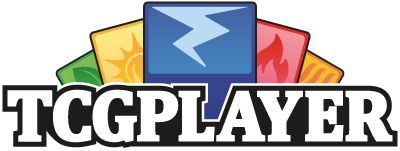7 Tips to Efficiently Manage Your Inventory
Carling Berkhout
Operating a game store is no easy feat and every minute counts. It’s important to always improve your processes to ensure your day-to-day is as efficient as it can be, especially since shaving fractions of a cent off each operation can make a huge difference. The key to growth is learning how to save time and money. Here are 7 tips for how to efficiently manage your inventory.
- List your inventory.
It goes without saying, but when you have unlisted and unorganized inventory, it’s much harder to sell. The first step is to digitize your collection and once you’re ready to sell, list it! If your product is on the TCGplayer Marketplace, we’re doing the marketing for you, bringing customers to the platform who want to buy from you. - Know and understand your customers.
Are your customers hunters, searching for something specific? Are they explorers, looking for inspiration and excitement with their next find? Ensure that your inventory is displayed and available in a way that supports all types of customers. Can hunters quickly search your inventory for the card they want? Can explorers easily browse and be inspired to find, buy, and show off their latest treasure? Are there recommendations so that the lost can feel confident in their purchase?
The goal is to connect your product to the right person. Once you understand your customers, you can strategically organize and present your inventory. - Sift for copper, not just gold.
Game stores and retailers can have different names for the process of pulling valuable single cards from piles of bulk –– we call it “sifting.” Turn sifting from an art into a science. It’s important to ensure you’re sifting for $2 to $5 cards, and not just the $10. Hopefully your store is lucky enough to have reliable and knowledgeable employees on each game you carry to seek out the right cards, but their time is expensive. Use criteria and automation, like Roca, to pull valuable cards from bulk inventory. - Follow the ABCs of optimal organization.
A: Alphabetize. Fully alphabetizing your inventory will allow you to pull cards for online and in-store orders at a much faster rate.
B: Basic for Employees. Create an easy and efficient system for your employees so they can quickly find any card without needing in-depth knowledge about the product line. Keeping your system simple can guarantee more accurate results and quicker training.
C: Chronological. Organize your inventory chronologically by set date. With this system, new releases won’t require you to reorganize and you’ll never have to shift anything around. - Use automation.
Automation technologies improve efficiency, reduce costs, and increase throughput. A Roca Sorter is capable of quickly sorting and alphabetizing your inventory with image recognition. Better yet, automation isn’t just about reducing cost, but also about increasing your throughput. Run your machine at night to achieve a higher volume operation: more cards pulled, sorted, listed, and sold. - Utilize channels.
After you digitize your inventory, you can decide where to display it and what channels to use. Channels are the avenues and places you make your product available. With TCGplayer Pro Website, you can create an easy-to-use website where customers can purchase directly from you. It also allows them to pick up their order in your store.
How do your customers search for singles when they are in your store? With the In-Store Kiosk, you can save time your employees spend with customers as they are looking through your binder of cards, the time spent training your employees to know what’s in those binders, and the time spent re-organizing those binders. Once your inventory is online, you can use a channel to display that inventory digitally in-store. Let your customers use the Kiosk to search for singles, sorting and filtering the cards the way they want to search. The Kiosk is a great way to serve multiple customers at the same time, and when they are ready to buy, they can build a cart and submit an order. Not only is this a more efficient way for your customers to shop, but it allows your employees to do more valuable things in the store. - Price like a pro.
Know your costs. Without knowing how much you spend, you’ll only be guessing on how to price. Consider these three costs:
- Acquisition Cost: How much did you pay to get this product?
- Labor Cost: How much are you paying yourself or an employee for the labor, i.e. acquiring, pulling, packing, and shipping the product? What are your material costs related to shipping?
- Fees: What percentage of the sale is going toward fees?
Identify the magic pricing number –– your break even number, where you know you will never turn a profit if you sell below it. Keep in mind this number may differ depending on whether the sale is in-store or online.
Automated pricing, like MassPrice, can be a valuable tool to save time and not worry about manually updating prices. With automation, you are able to create precise rules; for instance, you can implement scaled pricing based on condition –– set a price for a Near Mint card, and then a percentage less for Lightly Played, a percentage less for Moderately Played, and so on. The key to automation is testing it extensively to ensure the pricing rule will function as you expect.
